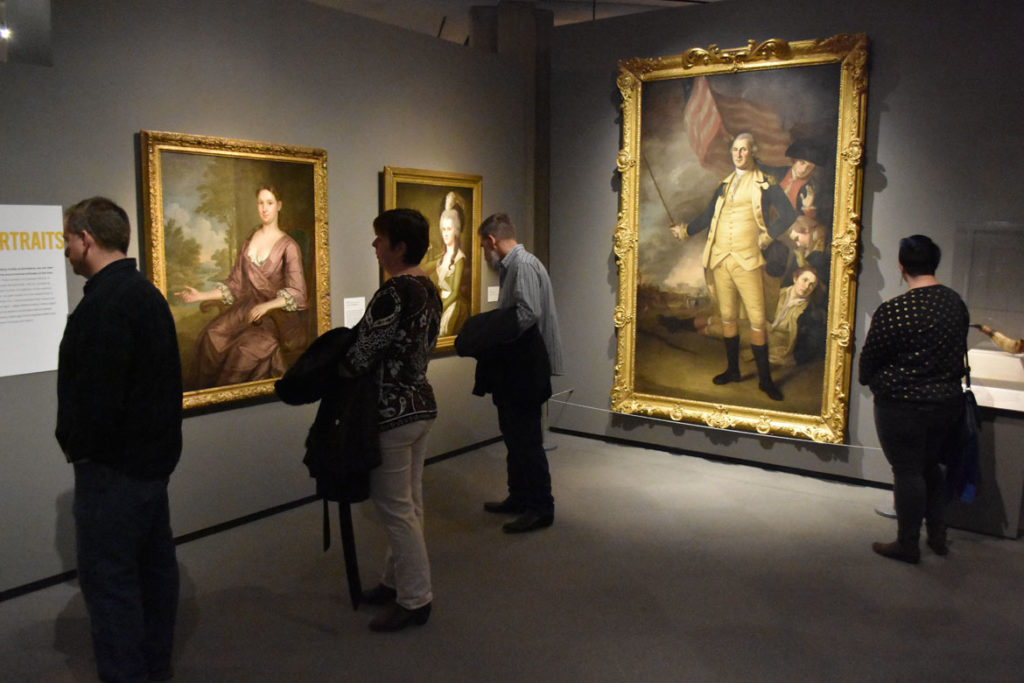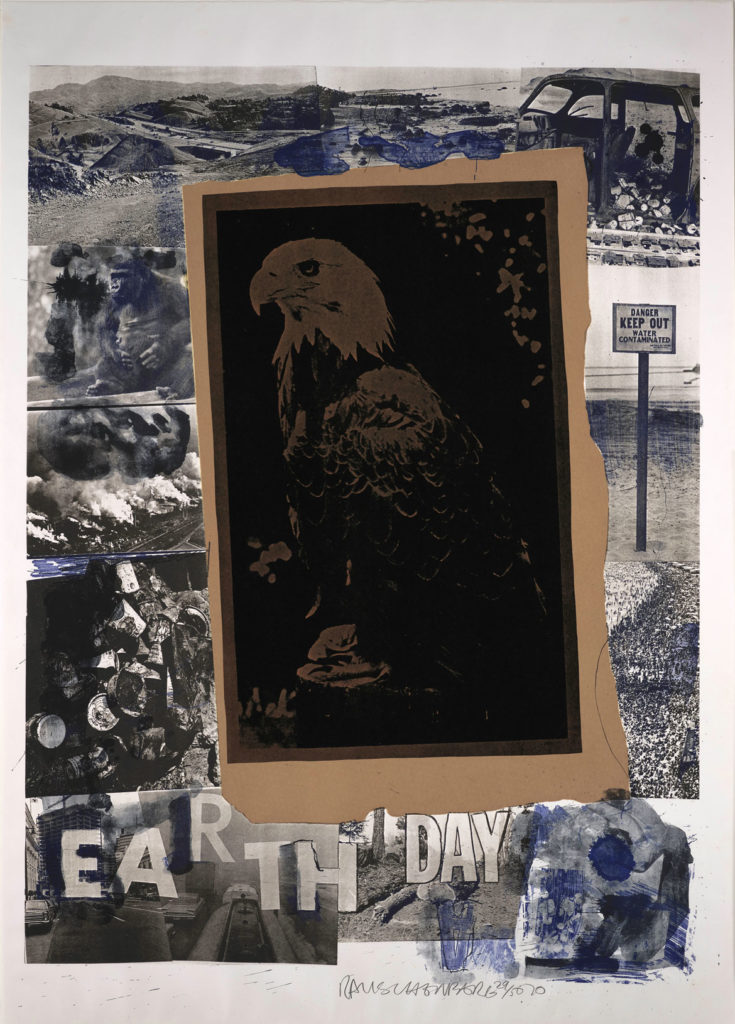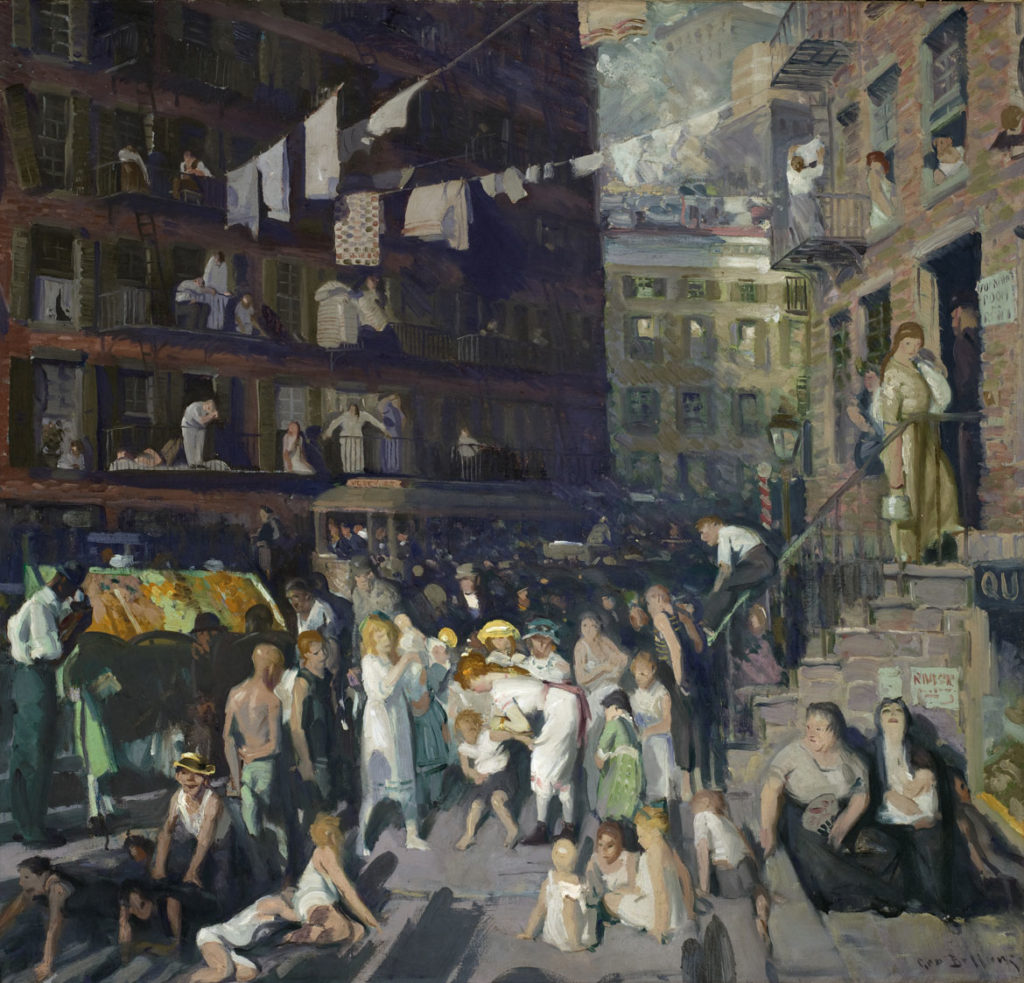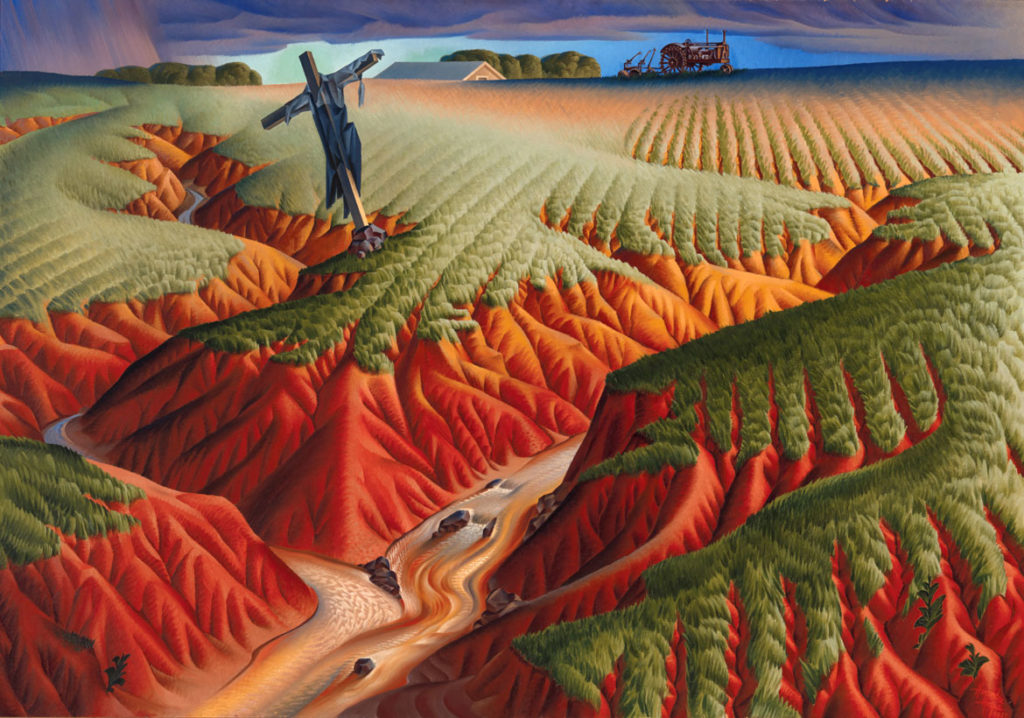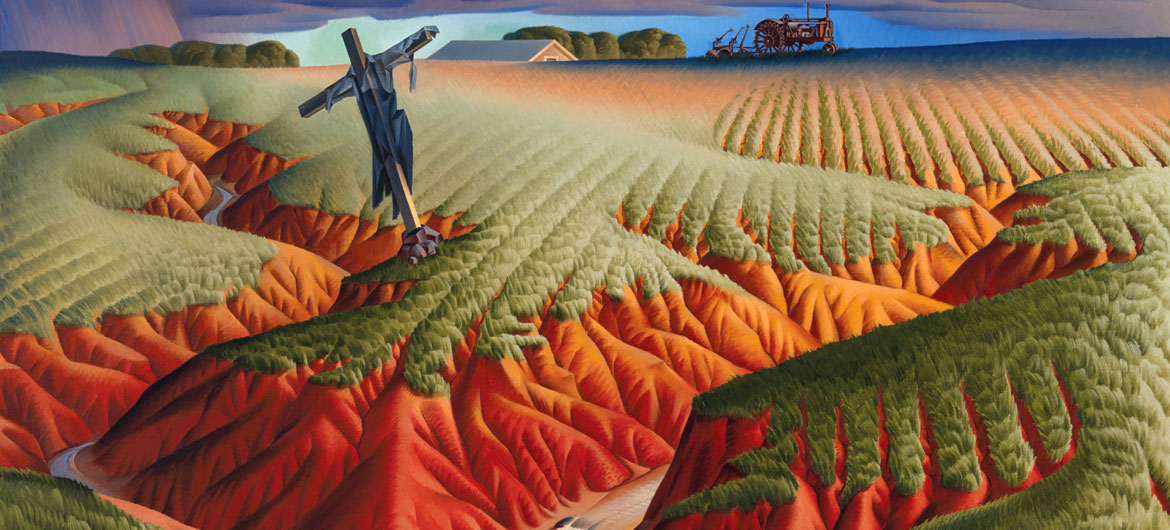“In some districts, where twenty-five years ago they were plentiful, scarcely any are now to be seen,” the American ornithologist and artist John James Audubon warned about the Carolina parrot in 1831.
The bird with its distinctive yellow head, red face and green body was once found around rivers and swamps and in old growth forests from Nebraska to Wisconsin to southern New York to the Gulf of Mexico. But the last known wild Carolina parrot was killed in Okeechobee County, Florida, in 1904. And the last of the parrots in captivity died at the Cincinnati Zoo—in the same cage in which the last passenger pigeon had gone extinct in 1914—on Feb. 21, 1918.
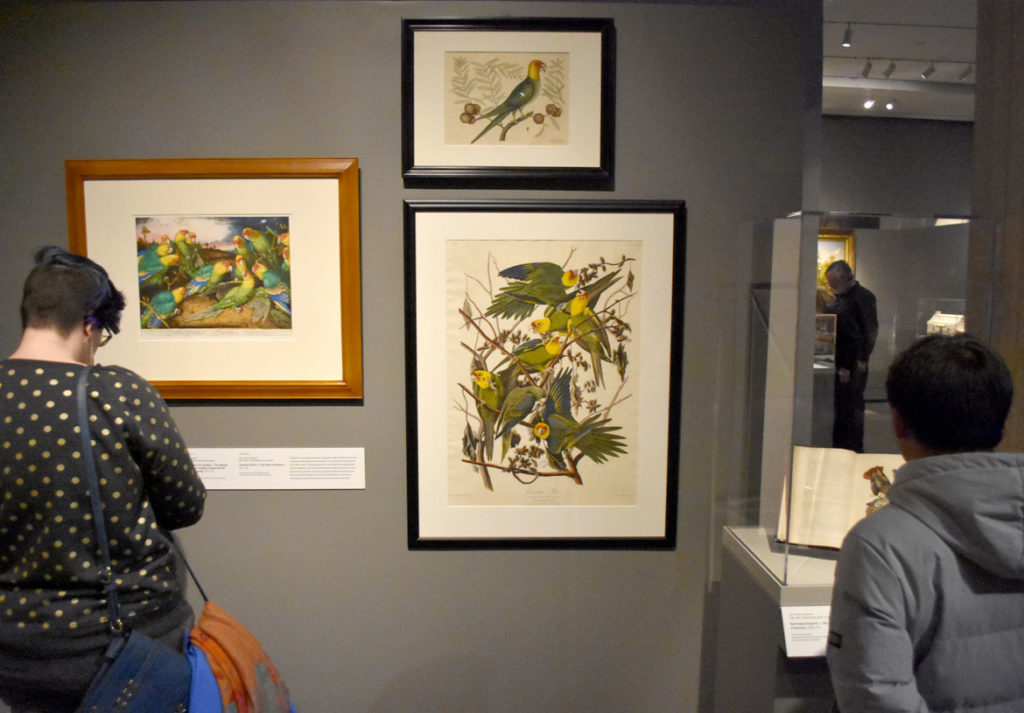
This story of devastating loss is suggested by three prints of the parrot hanging in one of the early rooms of “Nature’s Nation: American Art and Environment” at Salem’s Peabody Essex Museum through May 5. Mark Catesby’s 1743 hand-colored etching “The Parrot of Carolina” is a naïve portrait of the bird in profile. Audubon’s 1827 engraving “Carolina Parrot” shows seven sharply observed parrots jostling each other in a tree when the birds still remained abundant. Walton Ford’s 2005 etching, aquatint and drypoint “Dying Words” borrows the composition of Benjamin West’s 1770 painting of a mortally wounded British general to create an allegory of the parrot’s final days.
“Nature’s Nation” builds a revisionist history of the United States’ relationship to the land via more than 100 artworks by a lineup including Thomas Cole, Albert Bierstadt, Aaron Douglas, Jacob Riis, Hughie Lee-Smith, Ana Mendieta, Frank Lloyd Wright, Ansel Adams, Georgia O’Keeffe, Jaune Quick-to-See Smith, Isamu Noguchi, N.C. Wyeth, Dorothea Lange, Theaster Gates and Robert Rauschenberg.
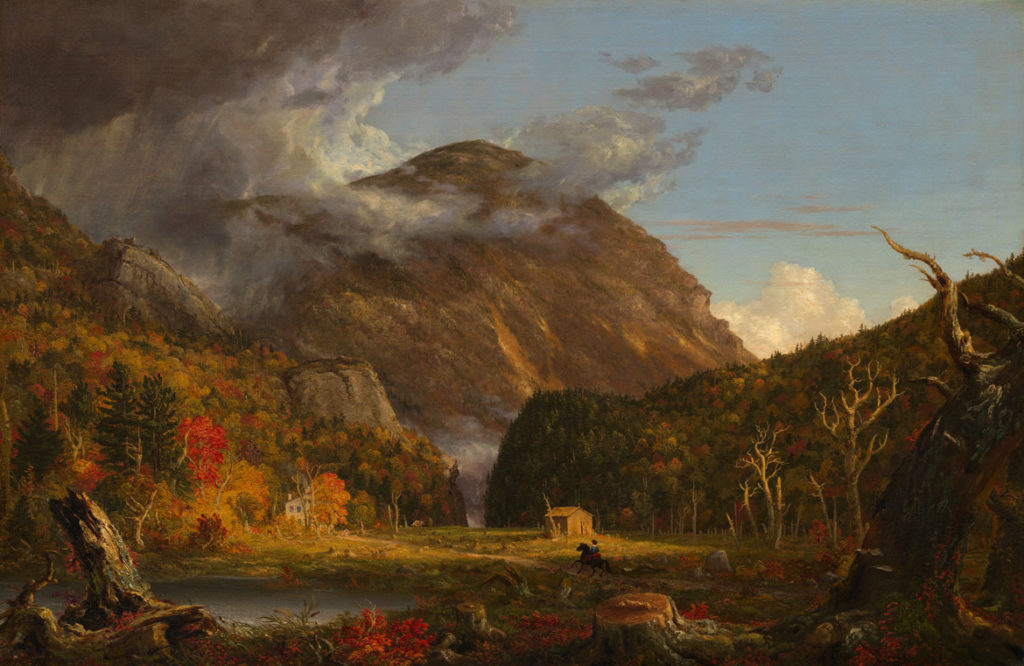
The curators from the Princeton University Art Museum offer footnotes and rebuttals to heroic paintings of majestic mountains, fruited plains and American dreams. In the backstories of beautiful landscapes, they uncover rapacious mining, forest clearing, land grabs, extinctions, colonialism, slavery, wars, racism, sordid tenements, polluting factories and endless corruption.
The scope of the counter narrative the Princeton curators attempt is breathtaking—and inspiring.
In Edward Savages’s 1796 oil painting of president George Washington and his family, they point out a black man named William Lee that Washington enslaved.

About Winslow Homer’s 1891 oil painting “A Huntsman and Dogs” they note, “In Adirondack Park, the large public forest preserve in New York, unethical hunting practices ran rampant during the 1890s. Wasteful, unsportsmanlike destruction of wildlife resulted. Homer critiques such commercial hunters … The stumps in the foreground reference the clear-cutting that stripped the background landscape of its trees and highlight the various forms of environmental transformation of the region.”
Alongside abstract artist Morris Lewis’s 1954 acrylic painting “Intrigue,” they note: “Though turpentine helped to create this ethereal abstraction, regular exposure to its toxic fumes likely played a role in Louis’s death from lung cancer at middle age.”
It’s the American dirty laundry that many of us know about, but that our elite cultural institutions are traditionally too polite to even whisper.

The curators’ strategy has proved controversial, prompting critiques that the curators have gone too far, are too didactic, have assumed too much, that they’ve twisted the art in service to their curatorial polemic, that they’ll turn off the very folks they’re trying to enlighten. The curators’ methods can get painfully earnest. And sometimes they seem to stretch too far to reach a point. All of which certainly does turn some folks off.
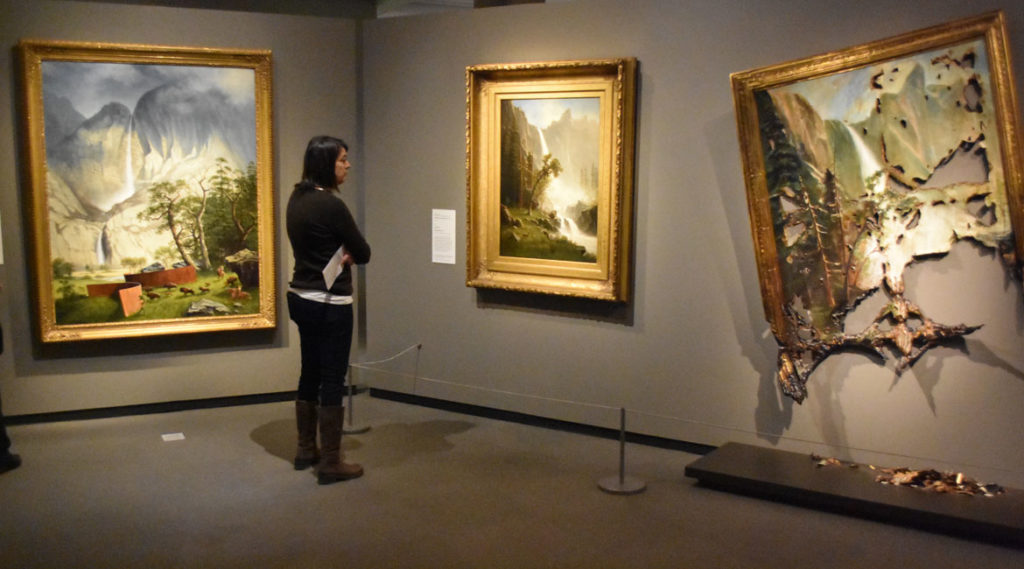
It is sad and painful to have so many beautiful artworks revealed as ugly history. But too often our elite cultural institutions go along to get along. They’re financially complicit with 1 percenters who hoard our world’s resources and often care so little about what or who they break along the way.
“Nature’s Nation” is a necessary corrective. And it’s thrilling to see the truth so bluntly told.
If this is the kind of coverage of arts, cultures and activisms you appreciate, please support Wonderland by contributing to Wonderland on Patreon. And sign up for our free, weekly newsletter so that you don’t miss any of our reporting.
